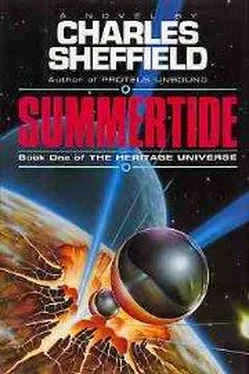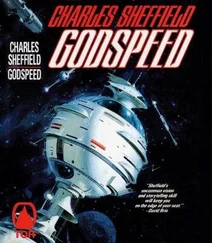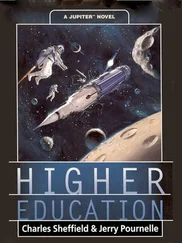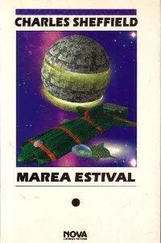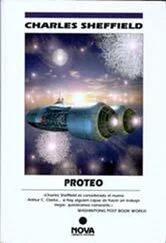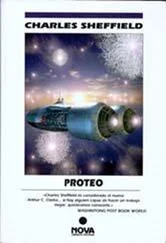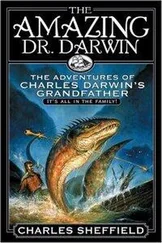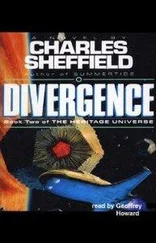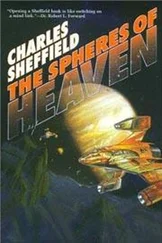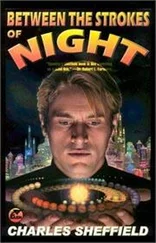Dobelle’s critical time of Summertide usually occurred when Gargantua and Amaranth were both far from Mandel. But all three orbits were in resonance lock. On rare occasions, Amaranth and Gargantua swung in together to Mandel, at a time that coincided with Summertide for Opal and Quake. And then…
“The Grand Conjunction,” Perry repeated. “When everything lines up at periastron, and the sea tides and land tides on Opal and Quake are as big as they can possibly be. We have no idea how big. The Grand Conjunction happens only once every three hundred and fifty thousand years. The last time was long before humans settled Dobelle. But the next time will happen just thirty-three days from now — less than two standard weeks. No one knows what Summertide will do to Opal and Quake then, but I do know that the tidal forces will be devastating.”
Darya looked at the soft ground beneath their feet. She had the terrible feeling that the flimsy mud-raft of living and dead plants was already crumbling under the assault of monstrous tides. No matter what the dangers might be on Quake, surely they were preferable to staying on Opal.
“So wouldn’t you all be safer on Quake?” she asked.
Perry shook his head. “The permanent population of Opal is more than a million people. That may seem like nothing for someone like you, from an Alliance world. But it is a lot for a Circle world. My birth planet had less than a quarter of that.”
“And mine less than an eighth of it,” Rebka said mildly. No one stayed on Teufel who had any way to get off it.
“But do you know the permanent population of Quake?” Perry glared at both of them while Lang wondered how she had ever thought him calm and passionless.
“It is zero ,” he said after a pause. “Zero! What does that tell you about life on Quake?”
“But there is life on Quake.” She had studied the planetary index. “ Permanent life.”
“There is. But it is not human life, and it could not be. It is native life. No human could survive Quake during Summertide — even a normal Summertide.”
Perry was becoming increasingly assertive. Darya knew that her case for visiting Quake was lost. He would deny her access, and she would get no closer to Quake than the Starside spaceport. As she decided that, help came from an unexpected direction.
Rebka turned to Max Perry and pointed a thin finger up to Opal’s cloudy skies. “You are probably right, Commander Perry,” he said quietly. “But suppose strangers are coming to Dobelle because it will be the Grand Conjunction? We did not consider that possibility when we were examining their applications.” He turned to stare at Darya Lang. “Is that your real reason for being here?”
“No. Definitely not.” She felt relief at being able to give an honest answer. “I never thought about the Conjunction until Commander Perry mentioned it.”
“I believe you.” Rebka smiled, and she was suddenly convinced that he did. But she recalled Legate Pereira’s words: “Don’t trust anyone from the Phemus Circle. They practice survival skills that we in the Alliance have never been forced to learn.”
“People’s reasons for coming here are not too relevant, of course,” he went on. “They don’t make Quake any safer.” He turned to Perry. “And I feel sure you are right about the dangers of Quake at Summertide. On the other hand, I have a responsibility to maximize the revenues of Dobelle. That’s my job. We have no responsibility to protect visitors, beyond a duty to warn them. If they choose to proceed, knowing the risks, that is their option. They are not children.”
“They have no notion of what Quake is like at Summertide.” Perry’s face had turned blotchy white and red. He was overwhelmed by strong emotion. “ You have no idea.”
“Not yet. But I will have.” Rebka’s manner changed again. He became a boss who was clearly giving orders. “I agree with you, Commander. It would be irresponsible for Professor Lang to visit Quake — until we are sure of the hazards. But once we do understand them — and can explain them — we have no duty to be overprotective. So you and I will go to Quake, while Professor Lang remains here on Opal.”
He turned to Darya. “And when we return… well, then, Professor Lang, I will make my decision.”
ARTIFACT: SENTINEL
UAC#: 863
Galactic Coordinates: 27,712.863/16,311.031/761.157
Name: Sentinel Star/planet association: Ryders-M/Sentinel Gate
Bose Access Node: G-232 Estimated age: 5.64 ± 0.07 Megayears
Exploration History: Sentinel was discovered in Expansion Year 2649 by human colonists of the trans-Orionic region. First entry attempt, E. 2674, by Bernardo Gullemas and the crew of exploration vessel D-33 of Cyclops class. No survivors. Subsequent approaches attempted E. 2682, E. 2695, E. 2755, E. 2803, E. 2991. No survivors.
Sentinel warning beacon set in place, E.2739; monitoring station established on nearest planet (Sentinel Gate), E. 2762.
Physical Description: Sentinel is a near-spherical inaccessible region, a little less than one million kilometers across. No visible internal energey sources, but Sentinel glows faintly with its own light (absolute magnitude +25) and is visible from every point of the Ryders-M system. The impassable surface of Sentinel readily permits two-way passage of light and radiation of any wavelength, but it reflects all material objects including atomic and subatomic particles. There is photon flux only from the interior, with no particle emission. Laser illumination of the interior is possible, and reveals a variety of structures at the center of the sphere. The most prominent such feature is “The Pyramid,” a regular tetrahedral structure which absorbs all light falling onto it. If interior distances within Sentinel have meaning (there is evidence that they do not — see below) then the Pyramid would be approximately ninety kilometers on a side. No increase in temperature of the Pyramid is detectible, even when incident absorbed radiation is at the gigawatt level.
Path length measurements using lasers show that rhe interior of Sentinel is not simply-connected; minimal light travel time across Sentinel is 4.221 minutes, compared with a geodesic travel time of 3.274 seconds for equivalent distance across empty space remote from matter. For light incident normally on the Sentinel “equator” travel times across Sentinel are infinite, or certainly in excess of a thousand years. Red shift and grazing incidence laser beams indicate that no mass is present within Sentinel, a result that is inconsistent with the observed interior structure.
Sentinel holds a precise distance of 22.34a.u. from the Ryders-M primary star, but is not in orbit about it. Gravitational forces and radiation pressure forces either are exactly compensated by some unknown mechanism in Sentinel, or do not act on the structure at all.
Physical Nature of Sentinel: According to Wollaski’i and Drews, Sentinel takes advantage of and is built around a natural anomaly of space-time and possesses only weak physical coupling to the rest of the universe. If so, this is one of only thirty-two Builder artifacts that were created with the use of preexisting and natural features.
Sentinel topology appears to be that of a Ricci-Cartan-Penrose knot in 7-space.
Intended Purpose: Unknown. However, it is conjectured (by analogy with other Builder artifacts, see Entry 311, 465, and 1223) that the Pyramid may possess near-infinite information storage capacity and lifetime. It has therefore been suggested (Lang, E. 4130) that the Pyramid and possibly the whole of Sentinel form a Builder library.
Читать дальше
